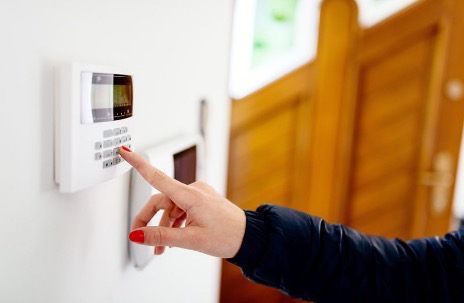
Home security systems function according to the basic mechanism to allow proper working. Every component is designed to protect your home from thieves, criminals, intruders, and strangers. It is a comprehensive set of tools or devices designed to help keep your property safe and secure. A wireless alarm system consists of different components that work together to provide protection against potential threats. Understanding how a home security system works is important for homeowners looking to invest in such a system.
The type of security system that has gained popularity in recent years is the wireless alarm system. In addition, wireless security cameras in Brisbane have become a popular choice for homeowners looking to monitor their property remotely.
Basic functioning and installation
A wireless alarm system is a security system that uses wireless technology to communicate with its various components. Wireless alarm systems use radio waves to transmit signals between the control panel and the various sensors or detectors around the house. This means that the system can be installed without wiring or drilling, which makes installation much easier and faster.
Components of wireless alarm system
The components of a wireless alarm system typically include a control panel, sensors, and detectors. All the components work together to provide reliable protection to the homeowner.
1. Control panel
The control panel is the brain of the security system and is responsible for receiving signals from the various sensors and detectors and triggering the alarm if necessary. The sensors and detectors are placed strategically around the house and are designed to detect any unauthorized entry or suspicious activity.
The homeowner or the security company can program the control panel to suit their specific needs. The control panel can be easily operated through a keypad or a mobile app.
2. Sensors
Sensors are devices that detect any unusual activity in the house. They are installed in strategic locations throughout the house and are connected to the control panel.
- Motion sensors: These sensors detect any movement within a specified range. They are installed in high-traffic areas of the house, such as the living room or the hallway.
- Door and window sensors: The sensors detect any opening or closing of a door or a window. They are typically installed on the frames of doors and windows.
- Glass break sensors: These sensors detect the sound of breaking glass. They are typically installed near windows or glass doors.
- Smoke detectors: These sensors detect smoke and alert the homeowner in the event of a fire.
- Carbon monoxide detectors: These sensors detect carbon monoxide, an odorless and colorless gas that can be deadly.
3. Cameras
Wireless security cameras are another essential component of a home security system. These cameras are designed to capture footage of any activity that takes place in and around the property. The footage is transmitted wirelessly to the homeowner's smartphone, tablet, or computer, allowing them to monitor their property remotely. This is particularly useful for homeowners who travel frequently or have second homes they want to keep an eye on.
- Indoor cameras: These cameras are installed inside the house and are used to monitor the activity within the house. They can be used to monitor the behavior of children or employees and keep an eye on the house when the homeowner is away.
- Outdoor cameras: These cameras are installed outside the house and are used to monitor the perimeter of the property. They can be used to capture footage of any suspicious activity, such as an attempted break-in.
- Doorbell cameras: These cameras are installed on the front door and record the person ringing the bell. You can also enable the audio feature to listen to the voice of the person standing at the door.
4. Alarm system and monitoring center
Wireless alarm systems typically come with various notification options, including email, text messages, and phone calls. This allows the homeowner to be immediately alerted if there is any suspicious activity on their property. In addition, many wireless alarm systems are connected to a monitoring center that can dispatch emergency services if necessary. The monitoring center is a 24/7 operation center that receives signals from the control panel.
All the components mentioned above work perfectly to alert the homeowner. Security camera systems in Brisbane have advanced features to safeguard your home and family members.
Conclusion
The main advantage of a wireless alarm system is its flexibility. Because the system is wireless, it can be easily expanded or modified as needed. For example, if a homeowner decides to add a room or area to the house, they can easily install new sensors and detectors without any wiring. This means that the system can be customized to meet the homeowner's and their property's specific needs.
Share this post
Leave a comment
All comments are moderated. Spammy and bot submitted comments are deleted. Please submit the comments that are helpful to others, and we'll approve your comments. A comment that includes outbound link will only be approved if the content is relevant to the topic, and has some value to our readers.

Comments (0)
No comment